The best hiking trails in Yellowstone National Park are spread all around this remarkable, 3,500 miles² (9,064km²) landscape, where vast calderas and grasslands meet hot springs, rivers, pine and spruce forests and tumbling waterfalls, backdropped by snow-capped mountains. This article focuses on the best day hikes in Yellowstone - meaning the great walks that you can do in the park on a single day, utterly immersing yourself in all of that beautiful nature.
Yellowstone has long been a hotbed of conservation - from becoming the first national park in 1872 to the reintroduction of Yellowstone wolves in 1995...
There are five entrances to Yellowstone National Park - north, northeast, south, east and west. Inside awaits the Grand Canyon of Yellowstone River, gushing geysers and serene mountain lakes. The wildlife is just as special. Look out for bears, wolves, elk, busy beavers, grazing bison, soaring eagles and so much more. Indeed, Yellowstone has long been a hotbed of conservation - from becoming the first national park in 1872 to the reintroduction of Yellowstone wolves in 1995, now considered one of the most successful rewilding projects to ever take place.
Of course, there are so many brilliant hikes and treks in Yellowstone.
What we’ve aimed to do here is to suggest a handful of the most diverse trails in Yellowstone - some long, some short, and geographically spread around the park, thus showcasing the different sides of Yellowstone. Remember before you set off that Yellowstone is a truly wild area - so bring maps, appropriate hiking gear (whether that’s water bottles, a compass or bear spray), and of course always be respectful and aware of your nature, the wildlife and your surroundings.
We've selected these 10 routes as the best day hikes in Yellowstone National Park:
- Avalanche Peak
- The Beaver Ponds Trail
- The Seven Mile Hole
- The Dunraven Pass to Mount Washburn
- Washburn-Grand Canyon Through-Hike
- The Sky Rim Trail
- The Fairy Falls Trail
- Hike the Lewis River Channel/Dogshead Loop
- The Storm Point Trail
- The Mount Holmes Trail
It’s important to note that these route descriptions are only short summaries, designed to inspire but not to serve any navigational purpose. They are not intended to guide you on the route and further mapping and planning (or a local guide!) will be required if you want to safely walk any of the trails featured.
Now, here's a map - and the 10 of the best hikes in Yellowstone National Park.
10 of the Best Day Hikes in Yellowstone National Park: Mapped
Yellowstone National Park sits mostly in the state of Wyoming, but also strays into Montana and Idaho. The park is 3,500 miles² (9,064km²) in size, making it the eighth largest national park in the US - though it is perhaps the best known.
10 of the Best Day Hikes in Yellowstone
1. Climb Avalanche Peak
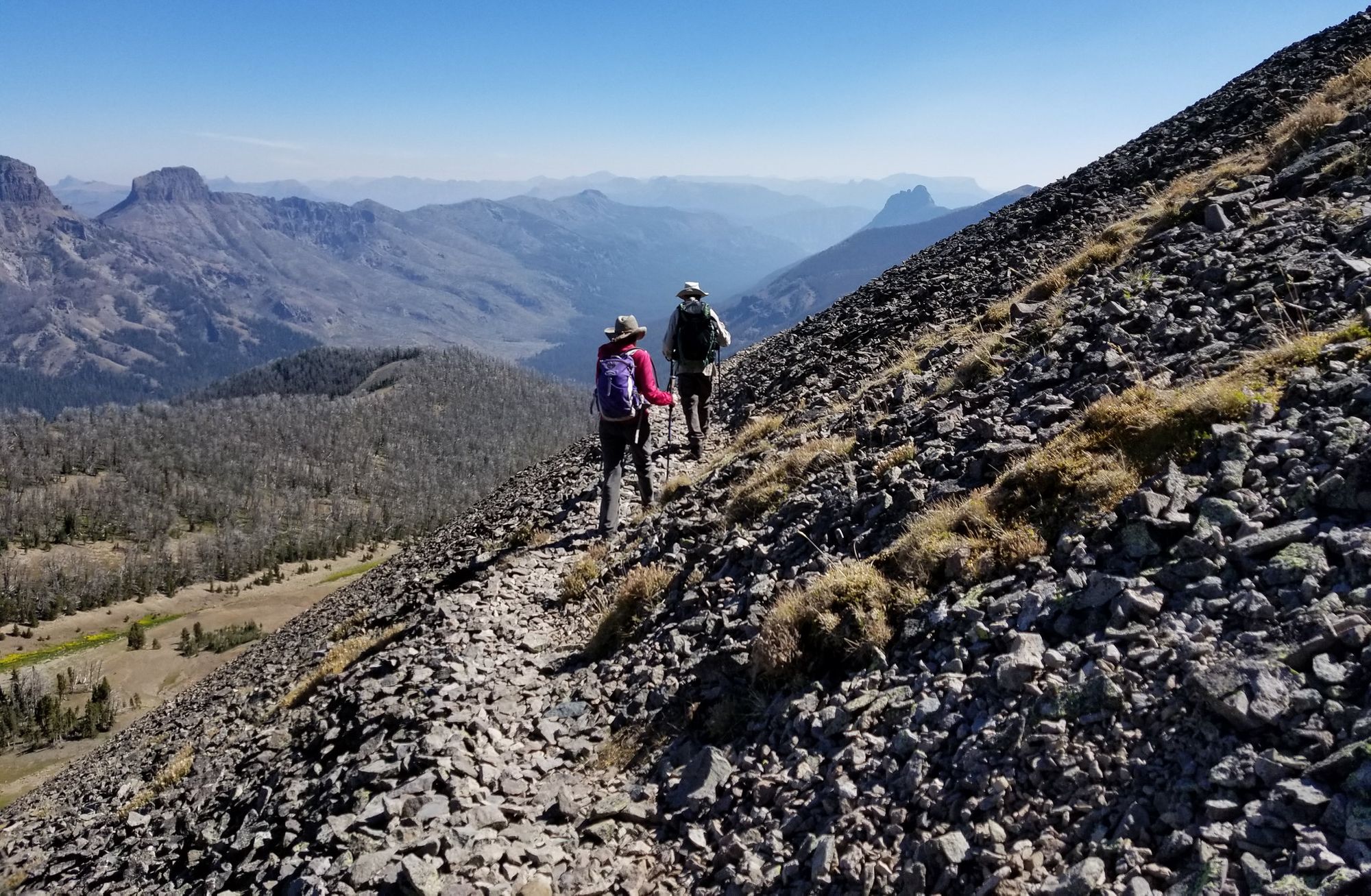
- Start/Finish: Avalanche Peak Trailhead (East Entrance), out-and-back
- Distance: A 4 mile (6.4km) round trip
- Walking time: 3-4 hours
- Difficulty: Challenging
- Best for: Big altitude in a short time
An out-and-back again hike from a trailhead on East Entrance Road (next to Eleanor Lake), the hike up Avalanche Peak isn't an easy one - climbing up a full 640m (2,100ft) in just over two miles - but it does take in a whole lot of beautiful scenery along the way. Right across from the parking area, and to the right of a creek, you'll find the start of the trail, which enters a forest and quickly starts ascending. One mile into the trail you'll get to the large bowl of Avalanche Peak, and from there, you'll switchback up to a level area just below the summit.
The summit of Avalanche Peak stands 3,221m (10,568ft) high, and is part of the Absaroka Range. The views from the rocky, bare summit are remarkable - looking out over to the other peaks of Yellowstone, over Yellowstone Lake and even to the distant Teton Range to the south. The trail is best hiked in summer, and is actually usually still covered in snow to some extent until early July. This should take around three to four hour hours but make no mistake - it’s not easy going.
2. Hike The Beaver Ponds Trail
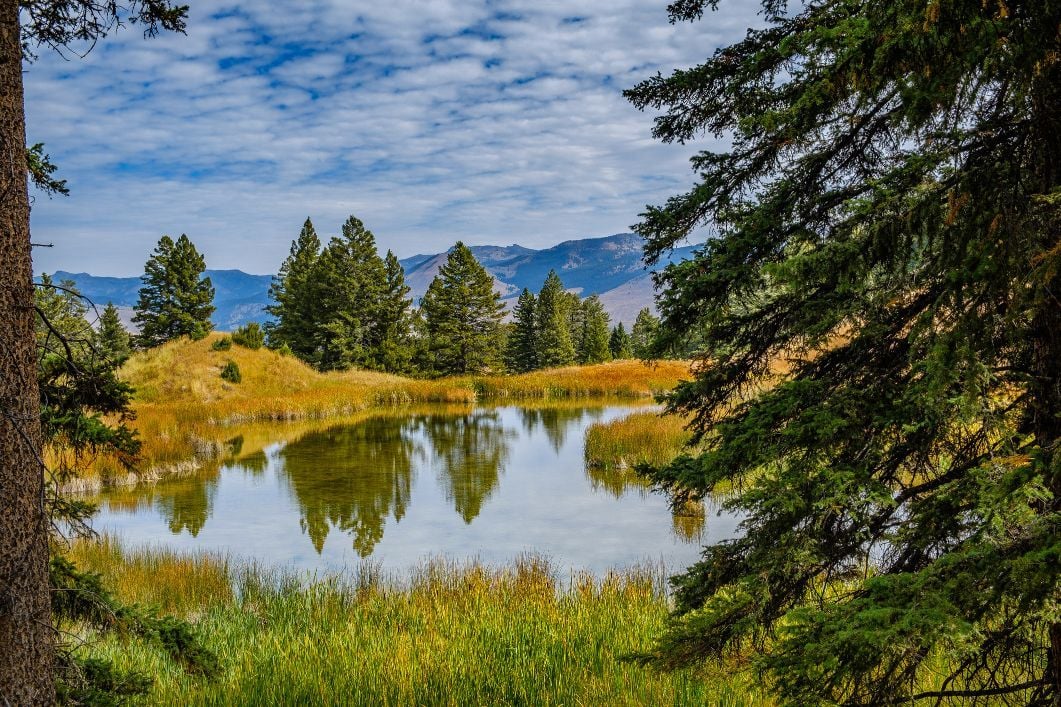
- Start/Finish: Mammoth Hot Springs, loop (North Entrance)
- Distance: 5.4 miles (8.7km)
- Walking time: 2-5 hours
- Difficulty: Moderate
- Best for: Spotting beavers and bears (do be careful!)
We started with a challenging classic, so we're following it up with one of the best hiking trails in Yellowstone for families. The Beaver Pond Trail is a 5.4-mile loop trail beginning and ending at Mammoth Hot Springs and passing through Douglas fir forest. It’s steep at the start, but levels out pretty quickly. The immediate upside of the loop is that you’re able to go out and come back without repeating your tracks - and it's a wonderfully quiet retreat from the bustling Mammoth village.
The trailhead is accessible north of Liberty Cap, behind Mammoth Hot Springs Hotel, at the start of Old Gardiner Road. The eponymous beaver ponds are about halfway through the loop, which can take from two to five hours, but there are plenty of other opportunities to see animals along the way. Another bonus is that this is generally quite a quiet trail. It’s great if you're looking for a moderate hike which really makes you feel like you're out in the wilderness of Yellowstone.
Grizzly and black bears frequent this area, so be sure to stay safe while walking.
3. Hike the Seven Mile Hole

- Start/Finish: Seven Mile Hole Trailhead (North/Northeast entrance), out-and-back
- Distance: A 10-miles (6.2km) round trip
- Walking time: 5-8 hours
- Difficulty: Challenging
- Best for: A trail full of variety
The trailhead for the Seven Mile Hole trail is at the Glacial Boulder pullout, on the road to Inspiration Point. This is a challenging day of hiking, but it's absolutely worth it. The Seven Mile Hole is a trail which combines all of Yellowstone’s best features – from the rugged beauty of the Grand Canyon of Yellowstone River to the coniferous forests, packed with wildlife, and geothermal features.
You'll start the day with a mile or so near the canyon rim, with views of Silver Cord Cascade across the canyon to get you fawning. In another half mile you'll join up to the Washburn Spur Trail, then just short of a mile later, join the Seven Mile Hole. This drops more than 1,000ft in 2.3 miles. Enjoy lunch at the base of the canyon before making the challenging ascent back up. The views, diversity and challenge of this truly make it one of the best hikes in Yellowstone. That's why we included it on our five-night hike in Yellowstone and the Grand Tetons epic trek adventure.
4. The Dunraven Pass to Mount Washburn Trail
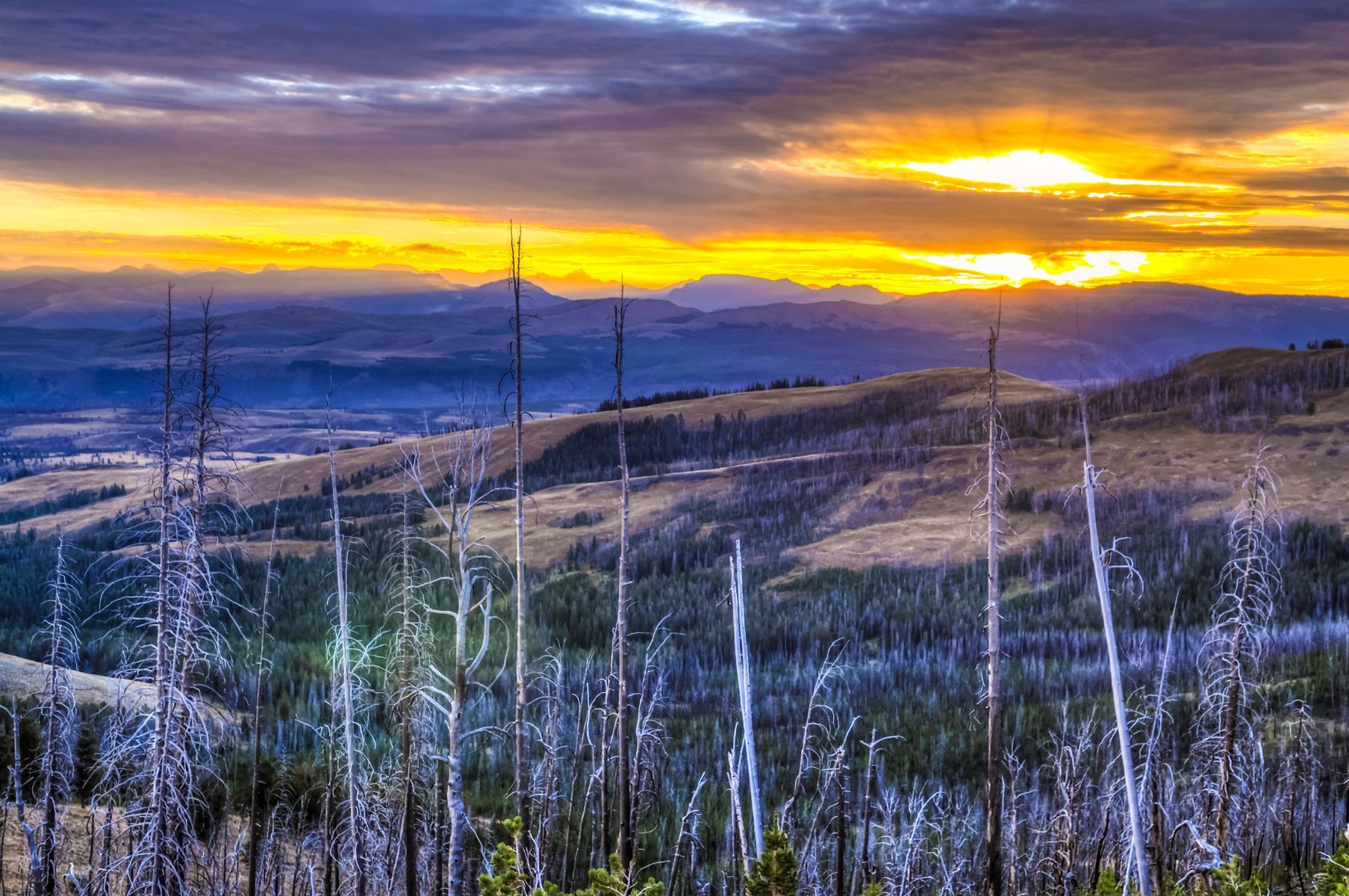
- Start/Finish: Dunraven Pass (North/Northeast entrance), out-and-back
- Distance: 6 miles (9.6km)
- Walking time: 3-6 hours
- Difficulty: Challenging
- Best for: A beautiful ridgeline
There are a couple of options to get you up to the ever-popular Mount Washburn, a prominent peak in the Washburn Range in Yellowstone National Park sitting at a lofty 3,116m (10,243ft), and with great views of the Grand Canyon of Yellowstone River. Our favourite route up is a classic - starting at the Dunraven Pass Trailhead.
The mountain is named after Henry Washburn, who led an 1870 expedition into northwestern Wyoming...
The route is a six mile round trip, and can take you anywhere from three to six hours. It follows a wide road up the southeast slope before turning north and climbing to the southwest slope of Washburn. Keep your eyes open for bighorn sheep and wildflowers, and beware in Autumn - grizzly bears frequent the area searching for whitebark pine nuts. The hike is moderately challenging, and provides some truly astonishing views of the Grand Canyon of Yellowstone, the Grand Teton mountains and the iconic Old Faithful Geyser Basin.
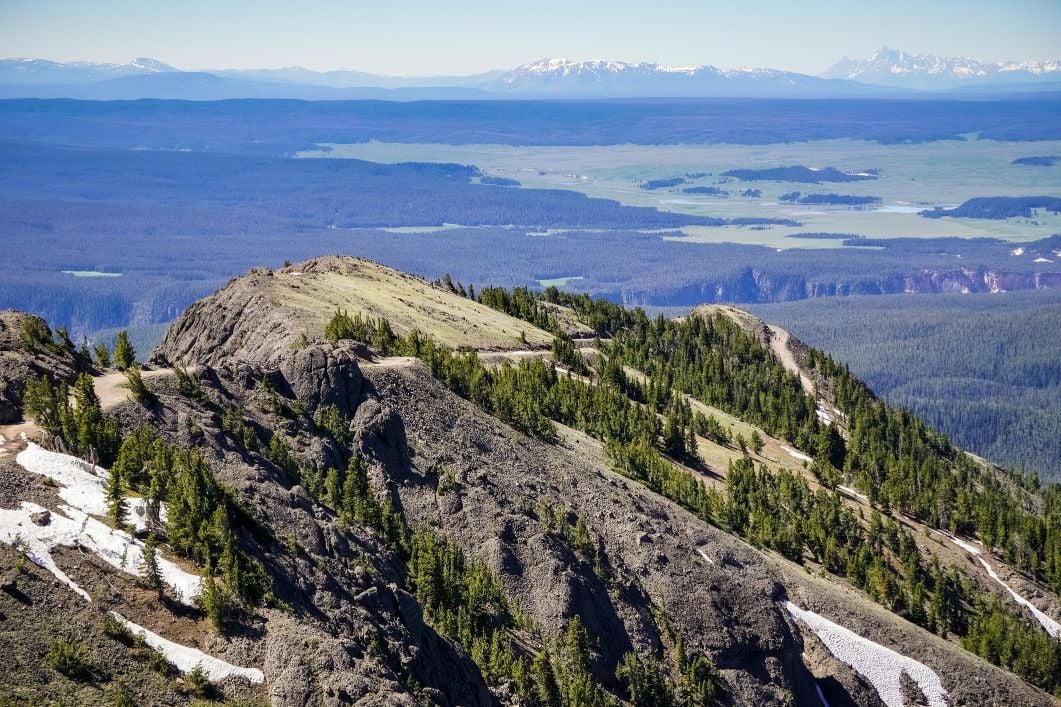
The mountain is named after Henry Washburn, who led an 1870 expedition into northwestern Wyoming, an area which became Yellowstone National Park in 1872. The group ascended the mountain on 29 August 1870 on (an early version) of this very trail, so there's plenty of history on these paths, as well as sweeping views.
For a shorter route up Mount Washburn, ascend instead from Chittenden Road. This way, you'll take a road on a steady incline, and still earn some mighty panoramas on the 5.8-mile round trip. Or you could even combine the two - climb from Dunraven Pass and descend to Chittenden Road for a through-hike.
5. The Observation Peak Trail
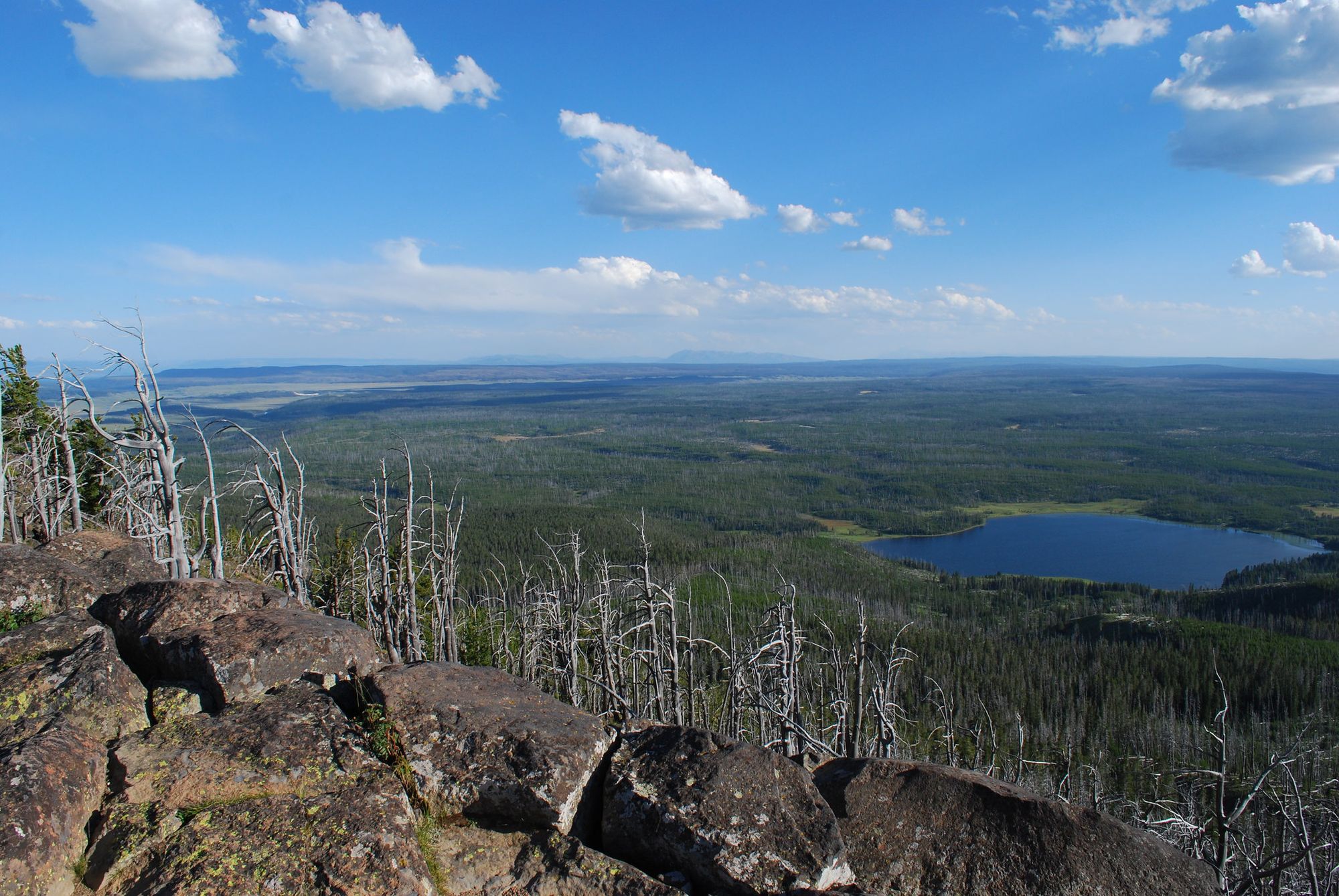
- Start/Finish: Cascade Lake Trailhead near Canyon Village (North/Northeast entrance), out-and-back
- Distance: A 9.6km (15.4km) round trip
- Walking time: 5-6 hours
- Difficulty: Challenging
- Best for: Reaching remote mountain solitude
Leaving the Cascade Lake Trailhead, you will hike in the direction of (and indeed, right up to) the eponymous lake, passing through open meadows to get there. At the lake, wildflowers bloom when the season is right, and elk, bison, deer and swans are often spotted. Bears also frequent this area, so do be safe on your walk.
The route jumps in and out of forests from here, gaining 450m (1,500ft) in total.
From here, it's on up to the 2,867m (9,406ft) summit of Observation Peak, where you can observe some mighty fine surroundings - notably unterrupted views of the wilderness, stretching over forests, lakes, grassland and out to the mountains. There is an unstaffed lookout building at the top of the mountain.
Then it's time to turn around and head back the way you came, with sensational views out over the Canyon Area of Yellowstone as you go. This trail can be wet and snowy through July, and it is a strenuous hike.
6. Hike the Sky Rim Trail
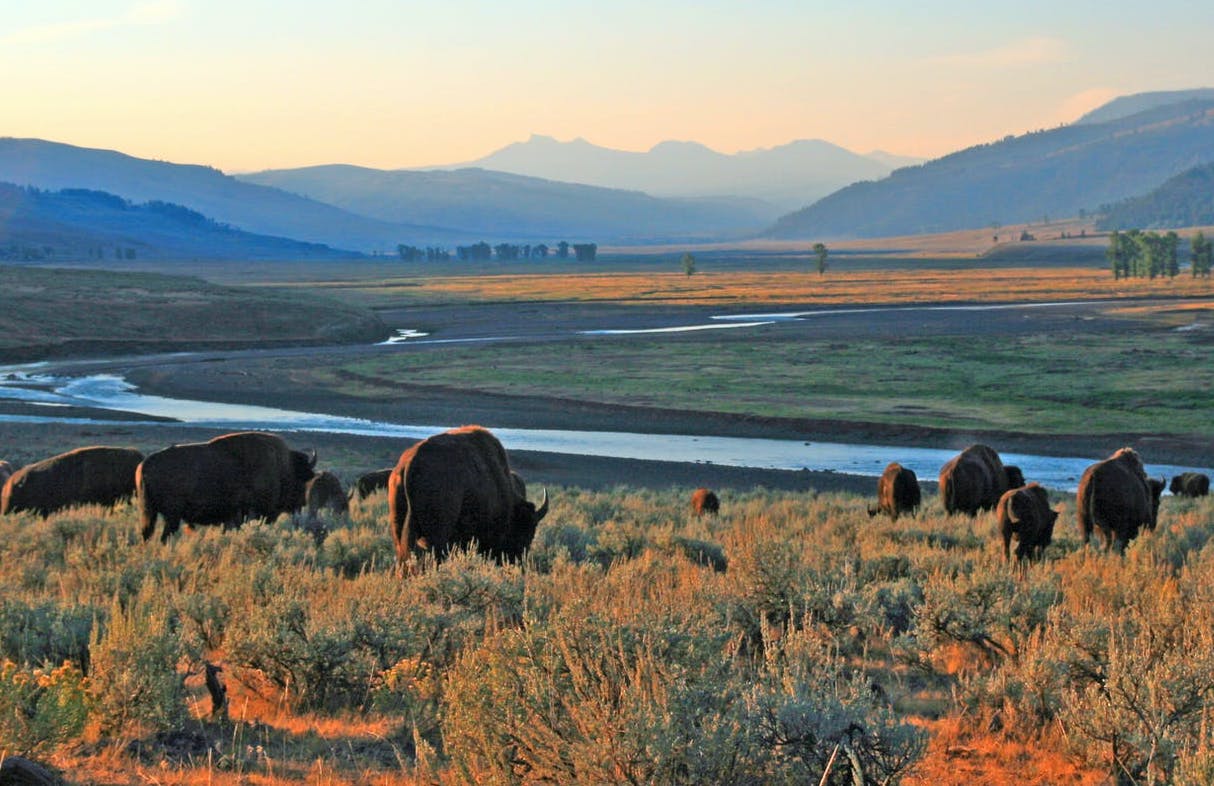
- Start/Finish: Sky Rim Trailhead (via West entrance), loop
- Distance: 19 miles (30.5km)
- Walking time: 10-14 hours
- Difficulty: Challenging
- Best for: A big, tough, day on the trails
Make no mistake, at over 19 miles (30.5km), the Sky Rim Trail requires a whole lot of fitness to complete in one day, starting and leaving from the Daily Creek trailhead. Most people who walk the Sky Rim Trail actually do so over two days, and spend a night camping out in the backcountry beauty of Yellowstone.
The hike starts by passing through lodgepole pine forests and alpine meadows, then begins the initial ascent up the ridge on the border of Yellowstone National Park and Gallatin National Forest. Expect panoramic views of some of truly awesome peaks - Ramshorn Peak, Fortress Mountain and Lone Indian Peak to the north and Canary Bird Peak and Sawtooth Mountain to the east.
Climb Big Horn Peak, and then from 3000m gaze back out on the majestic views from your vantage point. Continue along the Black Butte Trail and you'll then descend alongside the Black Butte Creek back to Dailey Creek.
The Sky Rim Trail is undoubtedly one of the best hiking trails in Yellowstone National Park - and certainly one of our favourite.
7. The Fairy Falls Trail
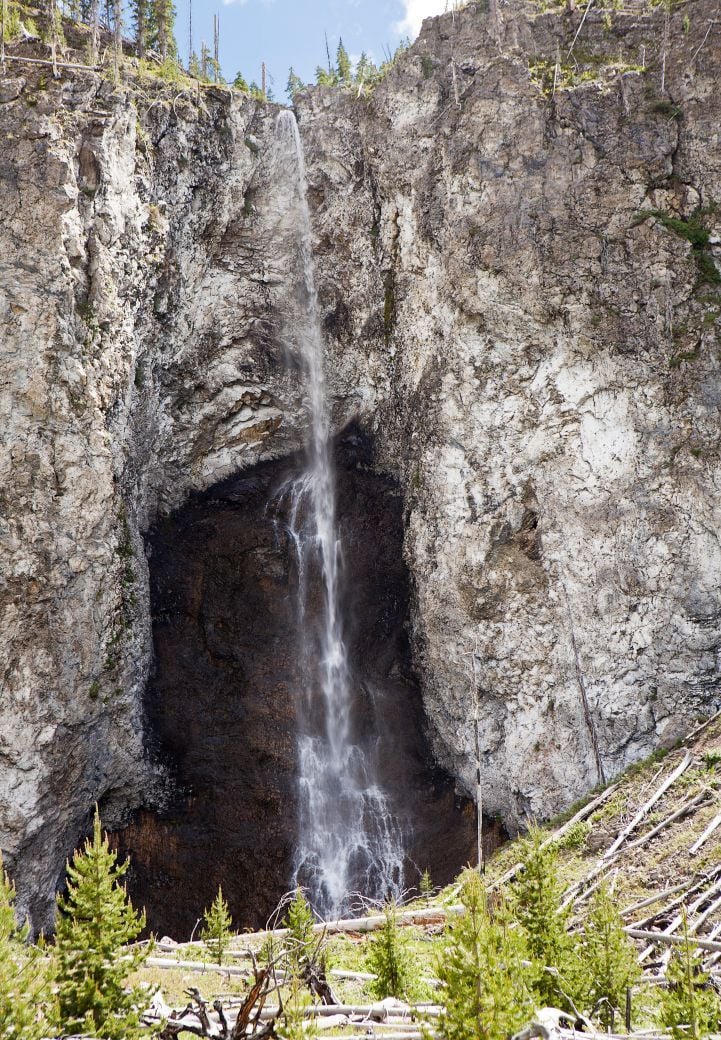
- Start/Finish: Fountain Flat Drive (West entrance), out-and-back
- Distance: A 7-miles (11.2km) round trip
- Walking time: 3-6 hours
- Difficulty: Easy to moderate
- Best for: Water features, from falls to geysers
This is a beautiful (though often busy) route which takes you to an incredible waterfall and two geysers. There are two trailheads and two approaches to Fairy Falls. You can either park at the end of Fountain Flat Drive or a mile south of Midway Geyser Basin, where there’s a popular car park with limited spacing.
It was named by the Hayden Survey in 1871 for the "graceful beauty with which the little stream dropped down a clear descent."
Your route will start on an old steel bridge. You'll then walk on gravel road and reach forests which were severely damaged in the 1998 forest fires.
If you’ve not heard of Fairy Falls before, you’re in for a treat (and you'll hear the water itself before you see the falls). At 61m (200ft) high, Fairy Falls is one of the most spectacular waterfalls in Yellowstone National Park. It was named by the Hayden Survey in 1871 for the "graceful beauty with which the little stream dropped down a clear descent." The rock formation alone is stunning.
The trail will take you through a young pine forest before you get to the falls. Keep your eyes open for the wildflowers and for wildlife as well. But though the falls are magnificent, they’re not the only attraction on the route. You’ll also pass a spur to the Grand Prismatic geyser overlook (pictured below) - where you can snap the famous circle of vivid blue, with Yellowstone stretching out behind it.
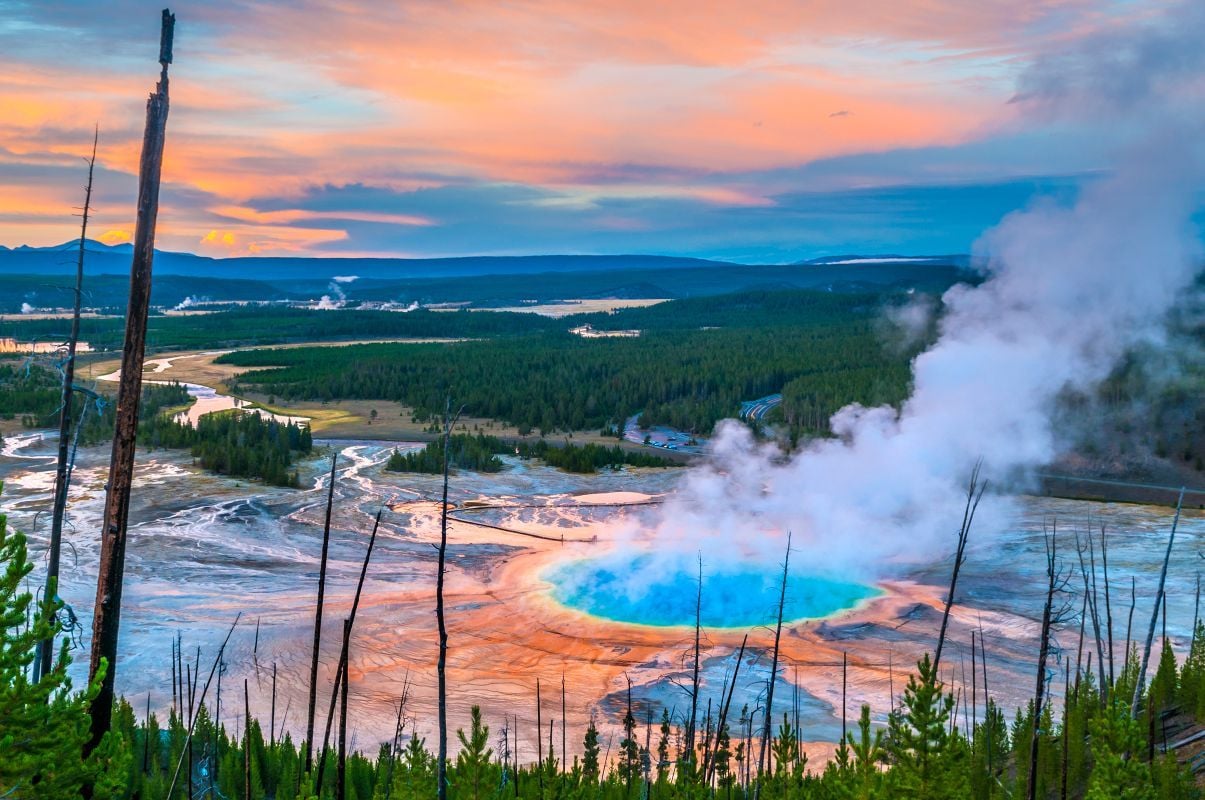
The trail then continues on past the falls to the Spray and Imperial Geysers. The Imperial infrequently still erupts, reaching up to 35ft. Between the geysers and the falls, it makes for a stunning walk - surely one of the best hiking trails in Yellowstone National Park, if also one of the best known. You can make this hike even longer by joining up with the Imperial Meadows loop. This adds almost three miles to the route before the trail connects back with the freight road.
Bonus: Visit Old Faithful Geyser
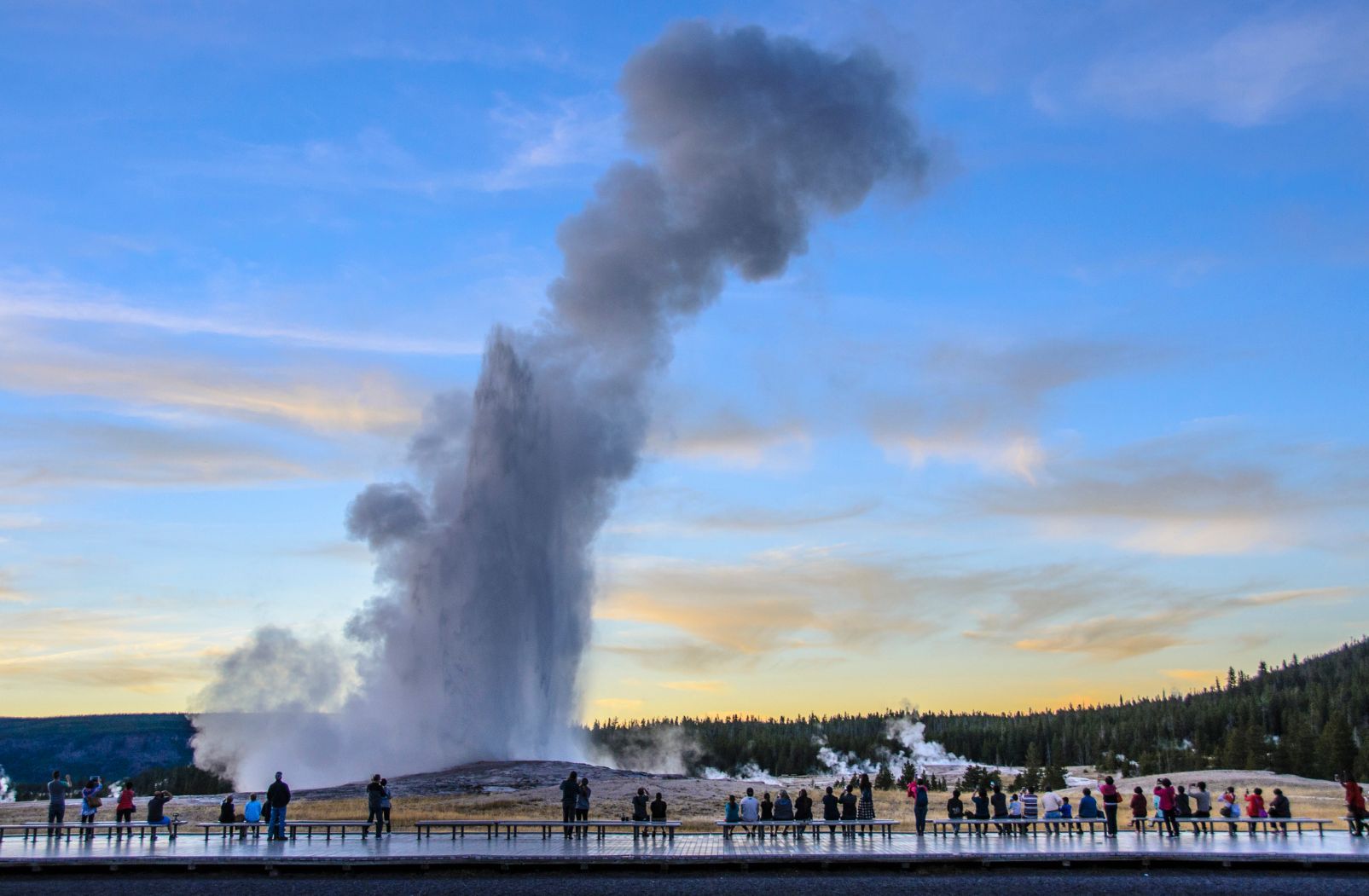
If you really want to see a geyser erupt, the world famous Old Faithful is the geyser to visit. Old Faithful is well named - records show that it's erupted every 44 minutes to two hours, around 20 times a day, since the year 2000. The eruption tends to be 100-180 feet high and lasts between one and a half to five minutes. It’s only a 10-minute drive from the Fairy Falls Trail Parking Lot, so you’ll pass it en route. It'll be busy with tourists waiting for the geyser, so we would recommend going to see it, then moving on to a lesser visited, wilder area, but it is a sight to behold. Less visited is the Lone Star Geyser, a backcountry geyser which can erupt 45 feet into the air and which sits along the Firehole River.
8. Hike the Lewis River Channel/Dogshead Loop
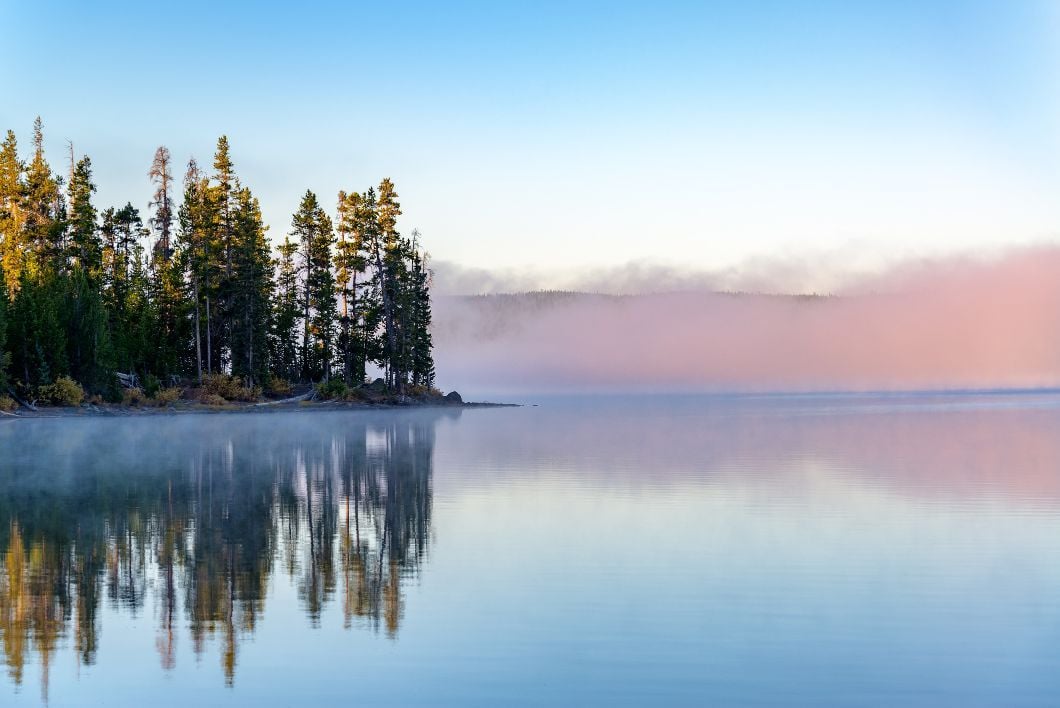
- Start/Finish: Lewis Lake area (South entrance), loop
- Distance: 10.8 miles (18.4km)
- Walking time: 5-8 hours
- Difficulty: Challenging (due to distance)
- Best for: Exploring the backcountry of Yellowstone
This trail is 10.8-miles (17.3km), starting and finishing at a trailhead off South Entrance Road, just north of Lewis Lake. Before you get to the trailhead you'll pass Lewis Lake, and before even that, you'll see the 30ft, cascading Lewis Falls, where it's definitely worth stopping for a while. They really are quite remarkable:
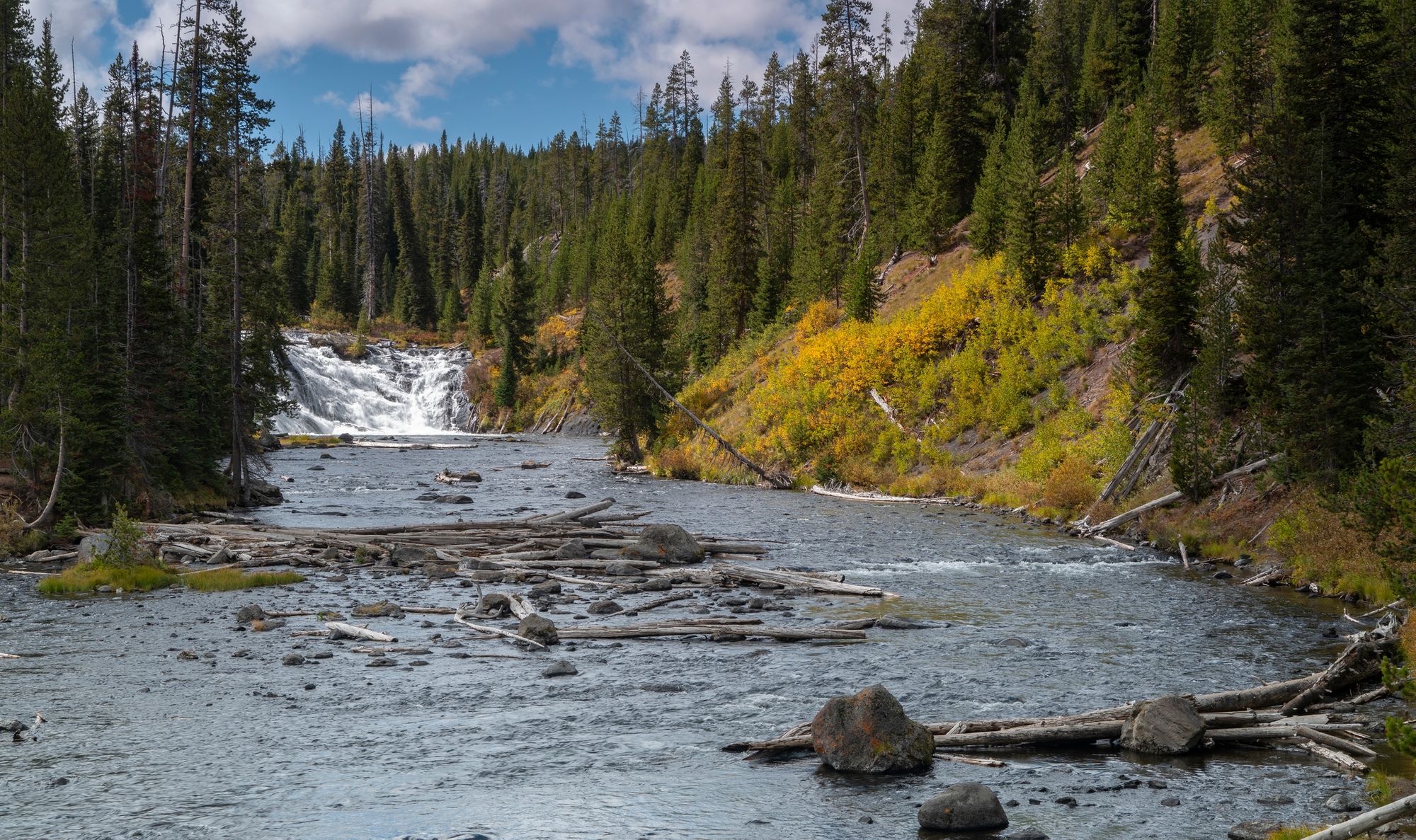
The trail proper then starts when you head out on the beautiful Lewis River Channel Trail. You'll get some great views of Lewis Lake, before following the Lewis River to the edge of Shoshone Lake and returning on the Dogshead Trail. This trail really gives you a feeling of being out in the backcountry of Yellowstone. The forests are vibrant, the waters of the Lewis River Channel are crystal clear and it's a quieter trail than most. You might spot trout in the shallow waters, and if you're lucky, some eagles or ospreys trying to grab them for dinner.
This is a great trail for those who love the peace and quiet of the forests - and maybe a cheeky swim stop at a lake too.
The South entrance of Yellowstone also borders Grand Teton National Park, so you’ll get two national parks for one if you travel in through the south entrance.
9. Storm Point Trail
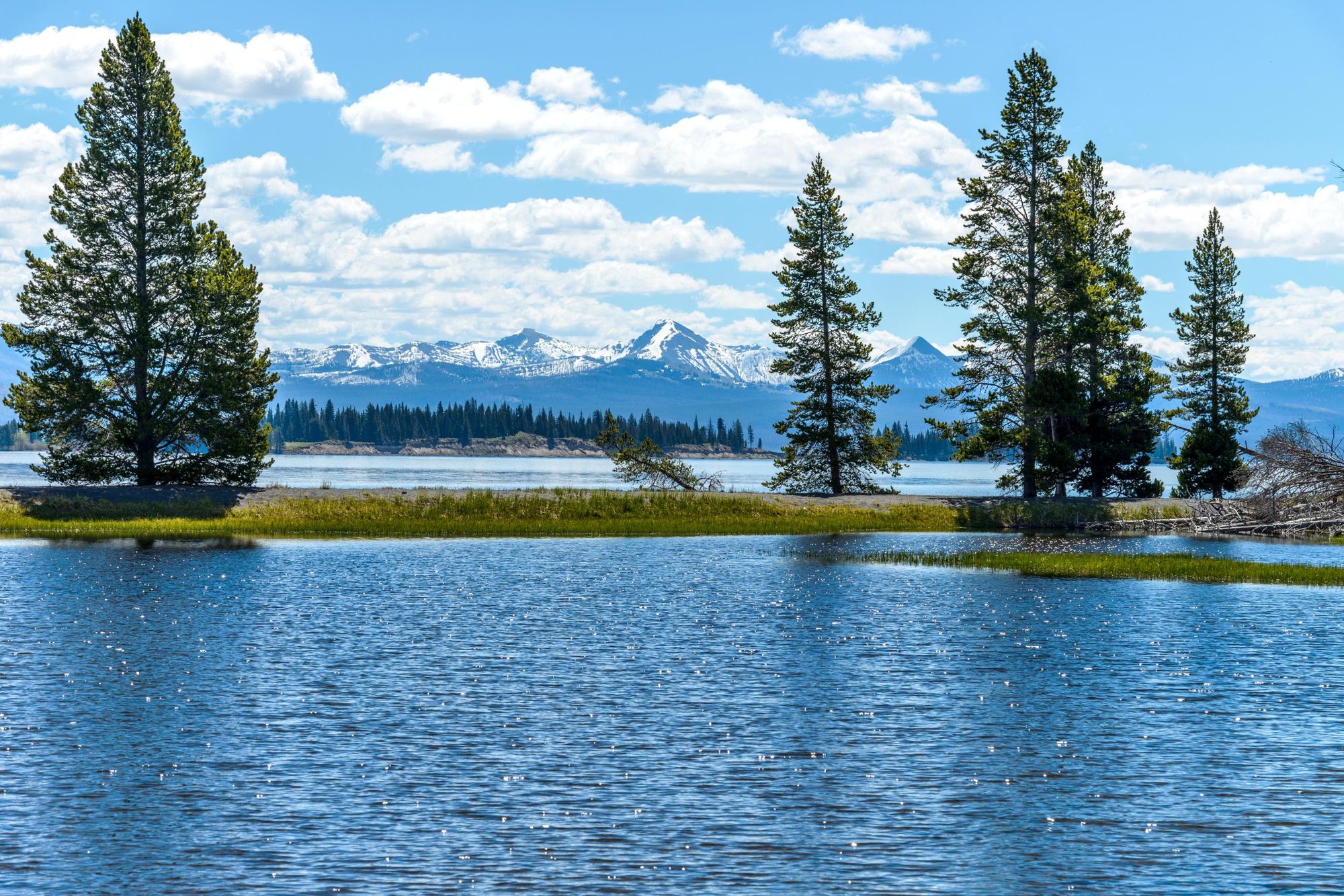
- Start/Finish: Storm Point Trailhead (East Entrance), loop
- Distance: A 2.3-mile (3.7km) round trip
- Walking time: 1-2 hours
- Difficulty: Easy
- Best for: A pleasant low-level stroll
This route might be a little simple for some serious hikers, but we wanted to include one route which sits on the edge of Yellowstone Lake, and this one does just that; starting in open meadows looking out at the lake and passing Indian Pond before leaving the meadows for a forest.
When you emerge from the trees, you'll do so to the drama of Storm Point - which usually lives up to its name, in terms of the ferocious wind at least. This is a spiky inlet which pokes into the northerne end of Yellowstone Lake, with Mary Bay on your left and the meeting of Yellowstone river with the lake on your right.
On the rocky area on the point, there are a sizeable colony of yellow-bellied marmots. Hang around and you should see one. The route then follows the shore of the lake before looping back through the forest to the starting point of the trail.
10. The Mount Holmes Trail
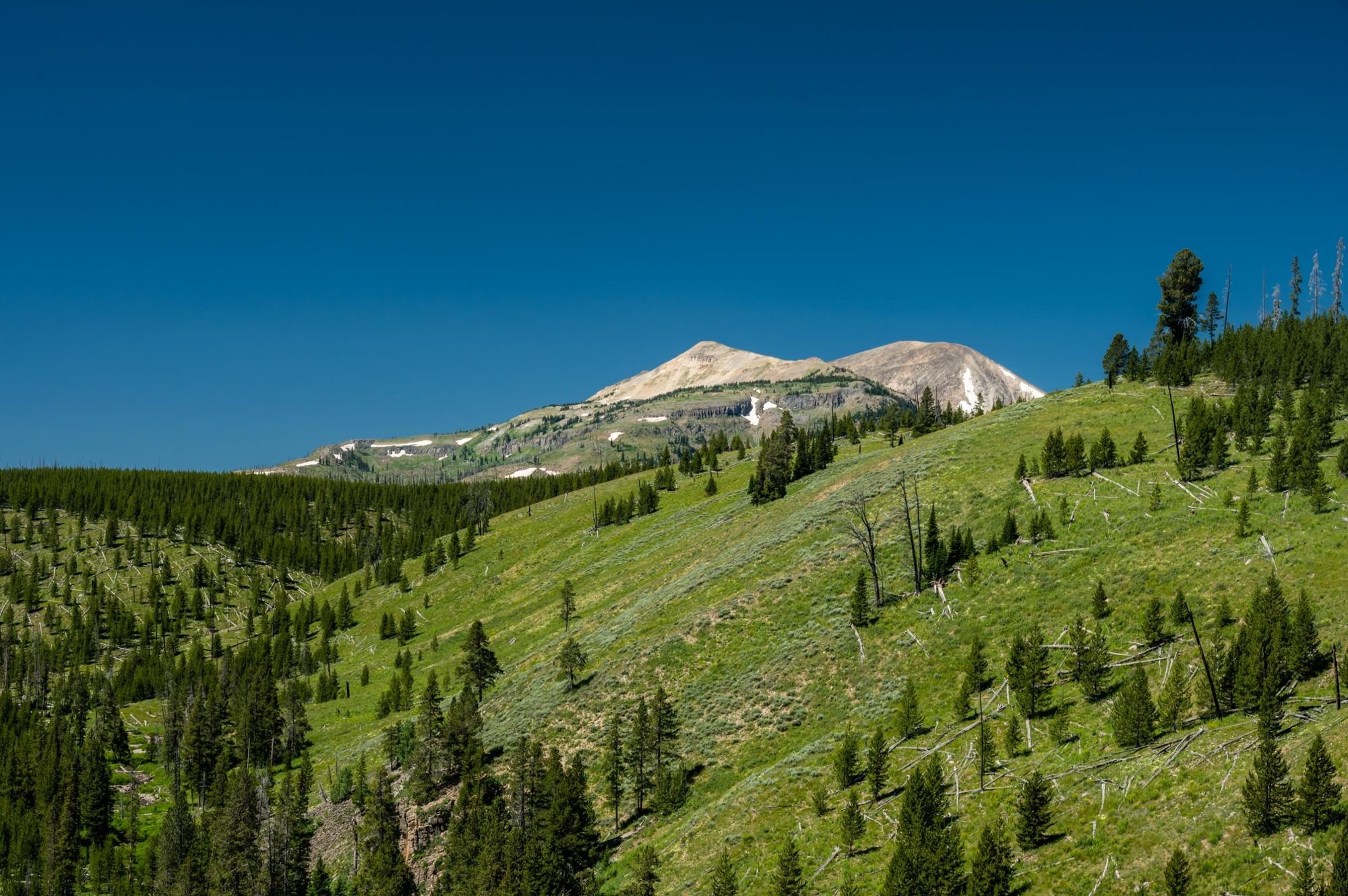
- Start/Finish: Mount Holmes Trailhead (North Entrance)
- Distance: A 18.8-mile (30.2km) round trip
- Walking time: 10-12 hours
- Difficulty: Challenging
- Best for: A gruelling, all-consuming Yellowstone hike
This is an extremely demanding hike which should only be undertaken by those with previous experience, and a good level of fitness. Exiting through forests, you'll soon find yourself walking through meadows and talus slopes which gain a full 914m (3,000ft) en route to the 3,150m (10,336ft) summit of Mount Holmes.
At the summit, you'll find an unmanned fire lookout and a panoramic 360 degree view out to Electric Peak in the north and the mighty Tetons to the south. Look out for elk running around below, and wildflowers on the trail as you walk.
This route is often done over two days - so only fit hikers should attempt it in one.
What Animals Live in Yellowstone National Park?
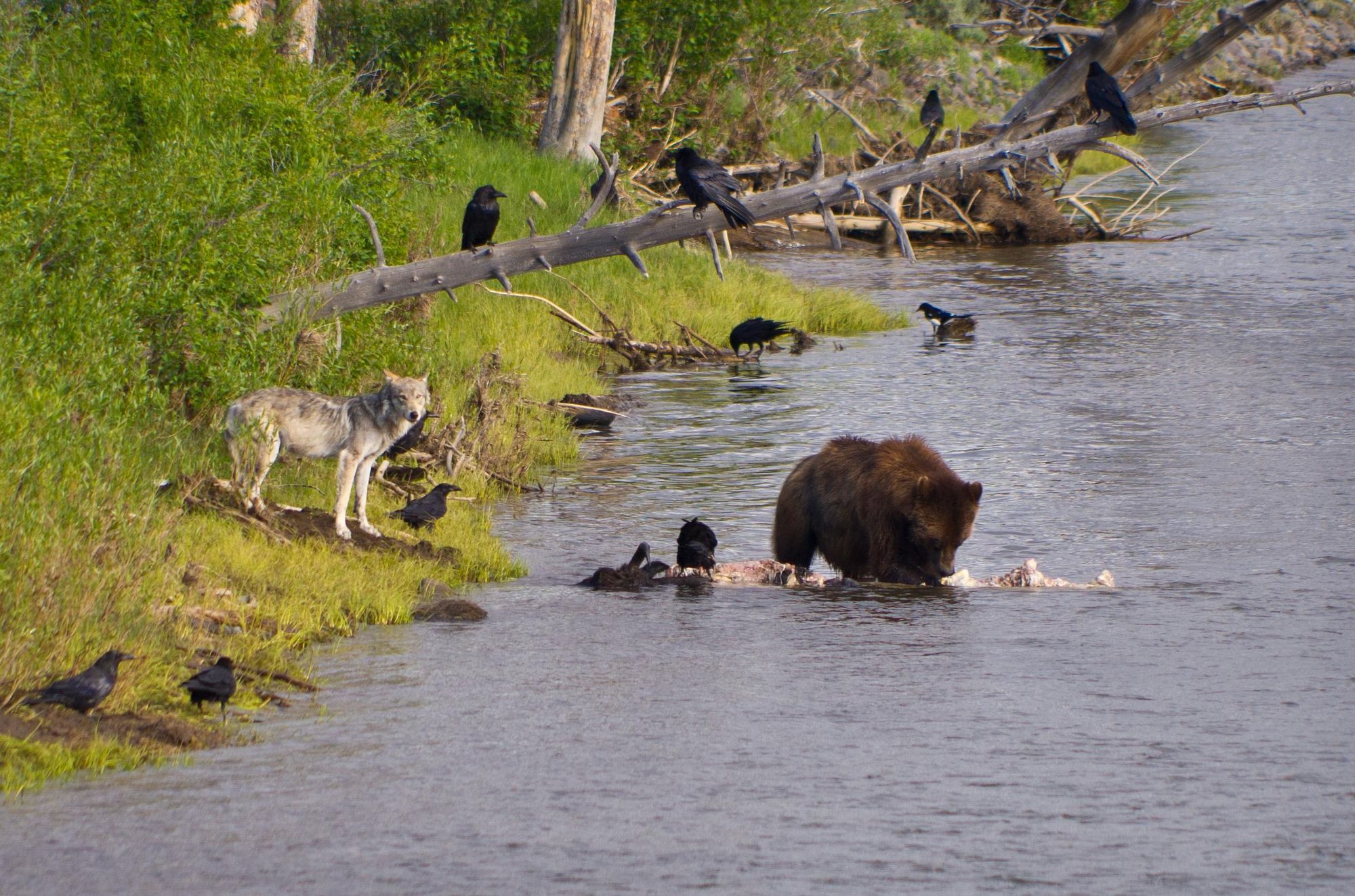
Yellowstone is buzzing with wildlife. The national park is home to the largest concentration of mammals in the lower 48 states. You've got species like bighorn sheep, bison, elk, moose and white-taled deers and then predators like balck and grizzly bears, coyotes, lynx, wolves, mountain lions and wolverines. In the skies, look out for bald and golden eagles, peregrine falcons and ospreys, while in the water, beavers swim amongst various endemic species of trout.
All in all, there are 67 different types of mammals in Yellowstone, as well as around 300 species of birds, 16 species of fish and five species of amphibians.
This is a place world renowned for its wolf rewilding project - and for playing a crucial role in the conservation movement, as the first ever national park.
Read more: How the Rewilding of Wolves Saved Yellowstone National Park
Where to Stay in Yellowstone National Park?
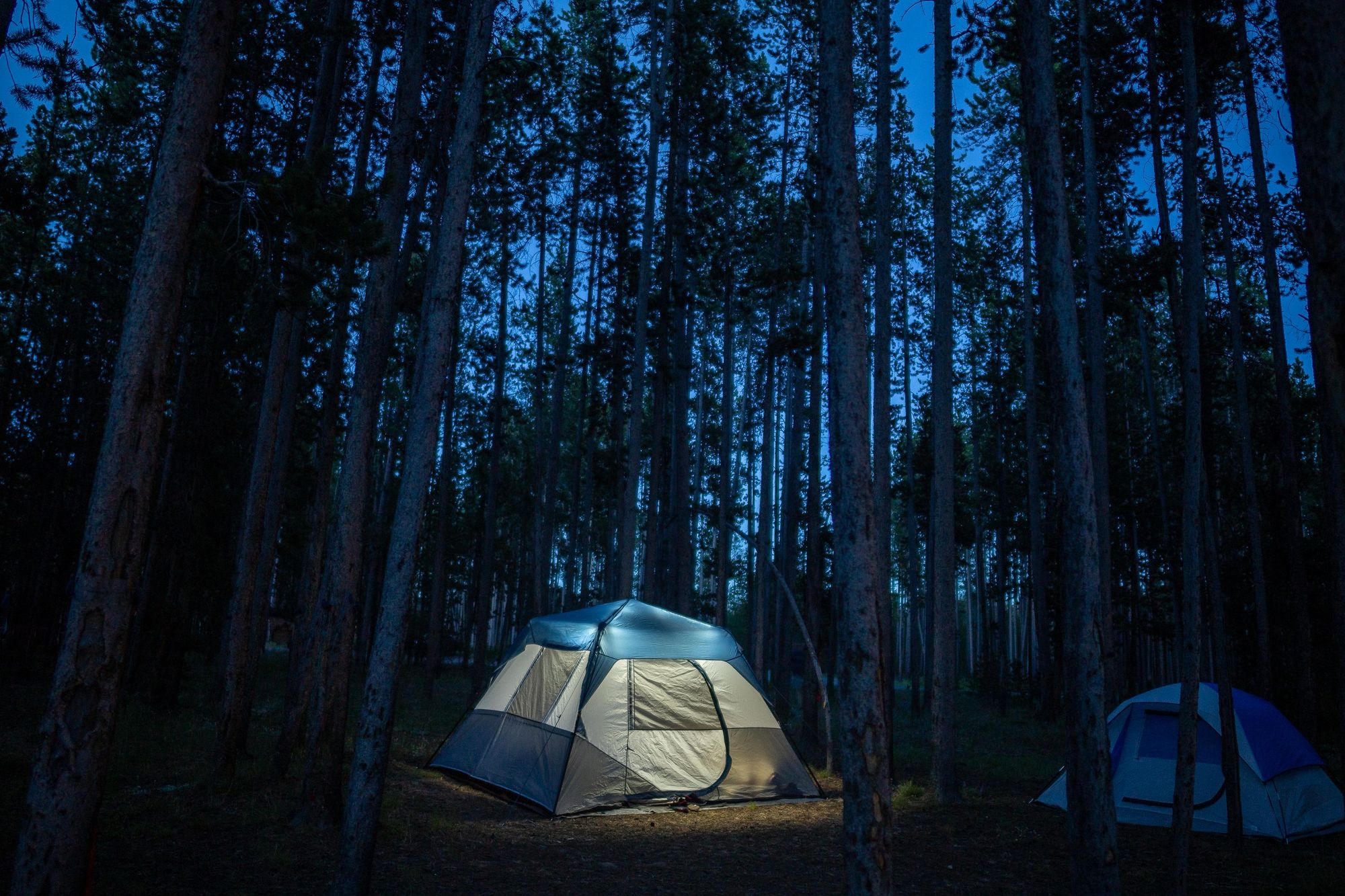
The big question you'll face in this regard is whether to stay inside or outside of Yellowstone National Park. Staying inside is much more immersive, but you will pay a bit more and you'll need to be a bit more self-sufficient. Staying outside (in West Yellowstone or Jackson for example) can be more comfortable, but will mean car queues and long drives to get into the park each morning.
If you're asking for our recommendation? It's always better to stay inside the park. We're pro camping, possibly with a cabin stay every other day to freshen up.
If you're asking for our recommendation? It's always better to stay inside the park.
There are 12 campgrounds in Yellowstone National Park. By far the biggest are Bridge Bay, which has 431 camp spots, and Grant Village, with 429 sites. Canyon, Fishing Bridge RV Park and Madison are also large, while all the others are smaller. Slough Creek only has 16 spots and is perhaps the pick of the bunch - out in the wilderness, with only the basics supplies and wolves howling in the night.
The nightly fee ranges from $20-25 for the smaller sites to $39 for the larger.
You should book camp spots in advance through Yellowstone National Park Lodges or Recreation.gov and you could also use particularly the former site to browse lodges and cabins in Yellowstone. There are lots of great options, including the Old Faithful Inn, the Mammoth Cabins or Lake Yellowstone Hotel. Some accomodation in Yellowstone needs to be booked up to a year in advance.
What to Eat in Yellowstone National Park?
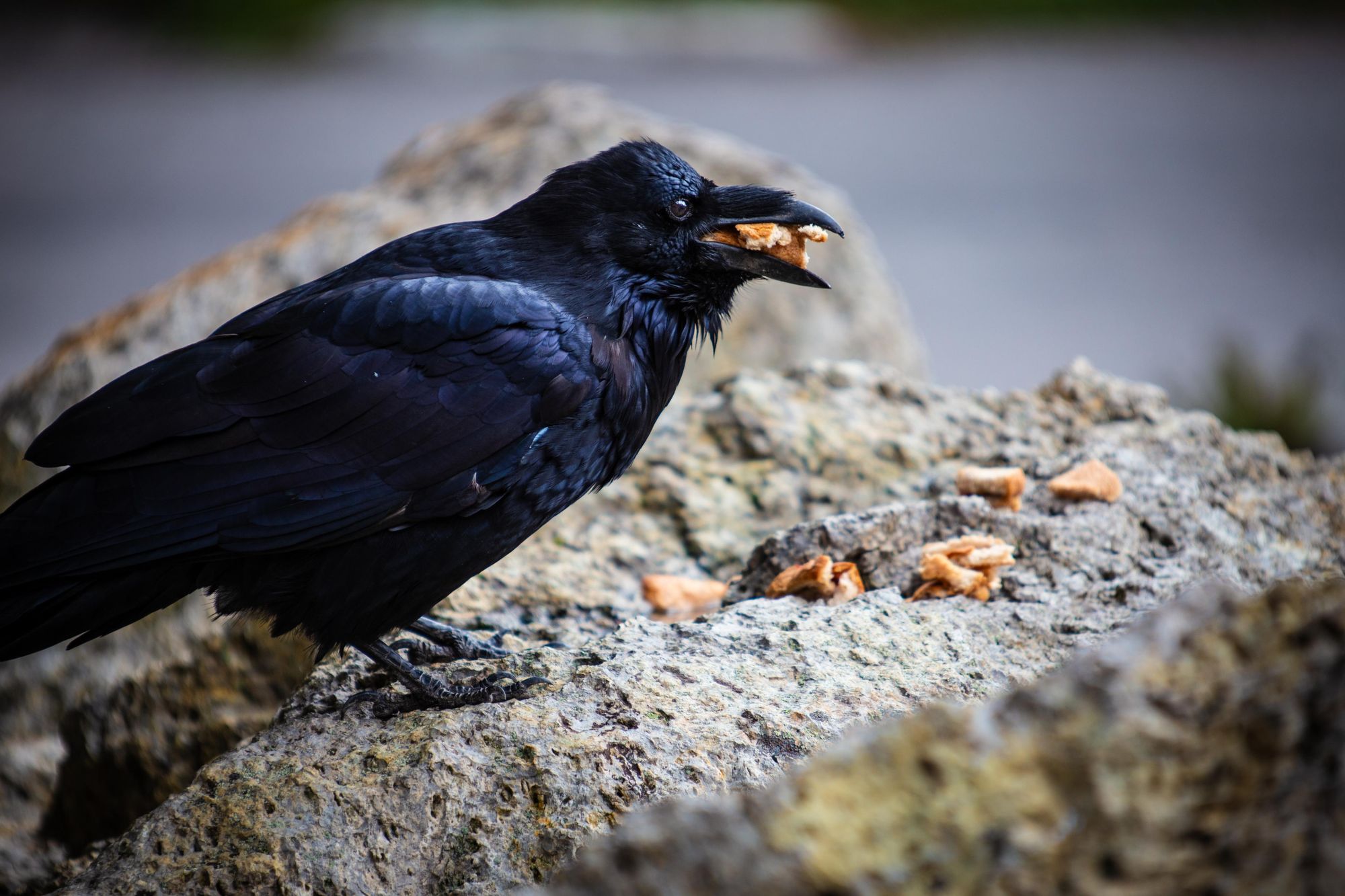
Yellowstone has more eateries than most other national parks in the United States, with 20 spots spread across the (very large) park. There are stores for buying snacks and groceries, sit-down canteens serving sandwiches, pizzas and burgers and then a whole bunch of actual restaurants, including some fancy options like the Mammoth Hotel Dining Room and the Lake Hotel Dining Room.
We're big fans of the good vibes at the Grant Village Lake House Restaurant, and you can also do a lot worse than food with a view at Old Faithful Lodge Cafeteria.
Naturally, we'd recommend bringing a lot of snacks and hiking food too. Picture yourself sitting down at a picnic bench with a nice sandwich. Sounds nice, right?
There are also some great, small joints in the towns surrounding Yellowstone.
How to Get to Yellowstone National Park?
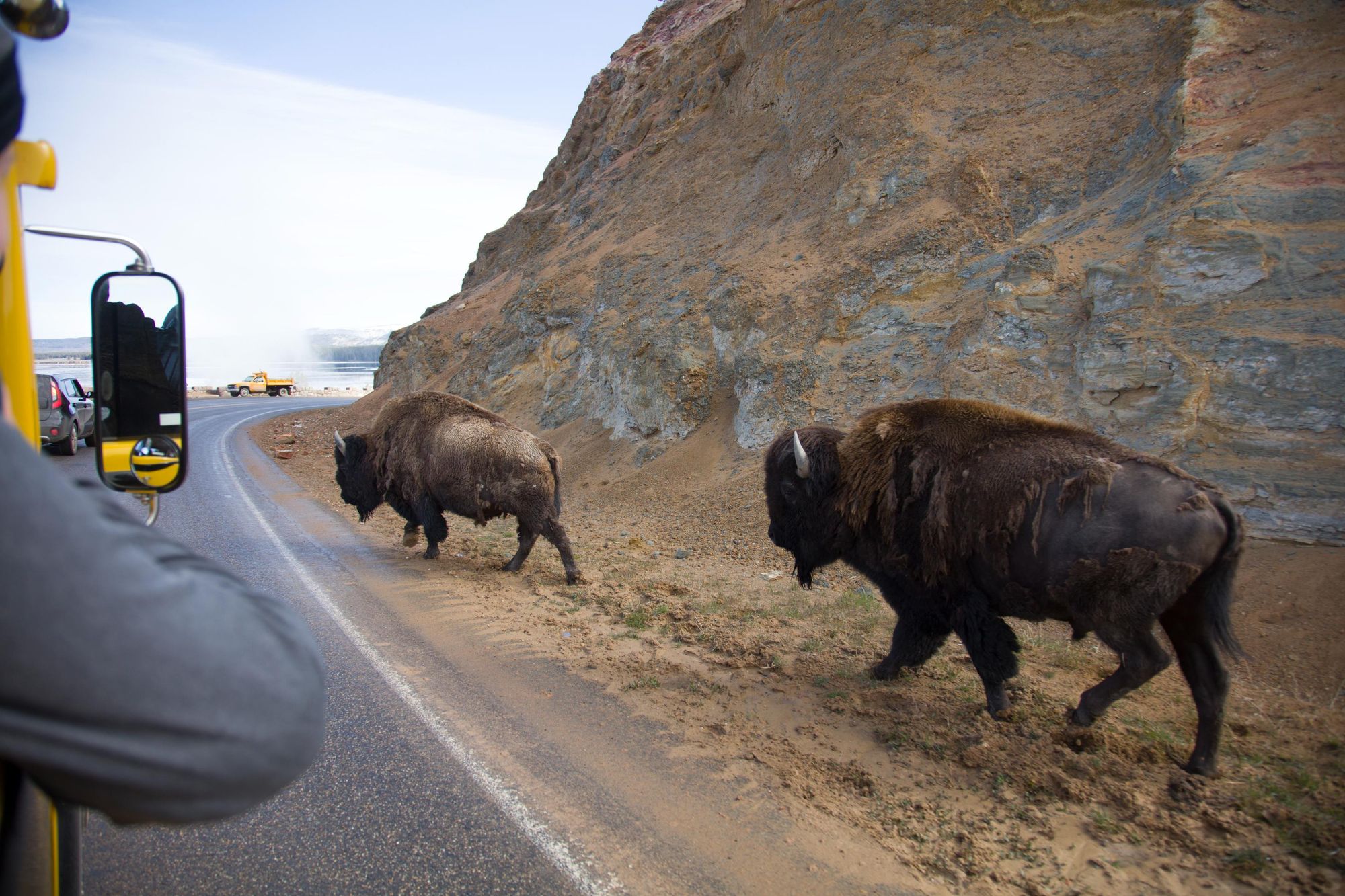
By train: There is no train service directly to Yellowstone National Park, unfortunately. The nearest Amtrak service goes to Salt Lake City in Utah, though that's still a 320-mile (514km) journey - meaning a roughly 4hr 45 minute drive. You can also get the Salt Lake City Express bus. More on that below.
By plane: Bozeman Yellowstone International Airport is a 90-minute drive from the North Entrance and two hours from the West. Yellowstone Airport is a small airport 10-minutes away from the West Entrance, while Idaho Falls regional airport also serves this entrance, with a 2hr 30 mins drive. Jackson Hole Airport, which is in the Grand Teton National Park, is an option for those wishing to enter via the South Entrance. It's a one hour drive to Yellowstone South Entrance.
By bus: You can reach Yellowstone National Park, by arriving at West Yellowstone, Montana (for the West Entrance) or Jackson Hole, Wyoming (for the South Entrance) on the Salt Lake City Express. Pick up spots include Salt Lake City in Utah or Idaho Falls in Idaho. Salt Lake City Airport to West Yellowstone is a seven hour bus with one transfer. Idaho Falls to West Yellowstone also has one transfer, but can be as quick as 2h 45 mins.
Read more:
- 5 of the Best Hikes in Yosemite National Park
- A Guide to Denali National Park in Alaska
- Hike the Great National Parks of the Western USA
Inspired? Check out our adventures in North America, which take you to the country's best wilderness areas.

